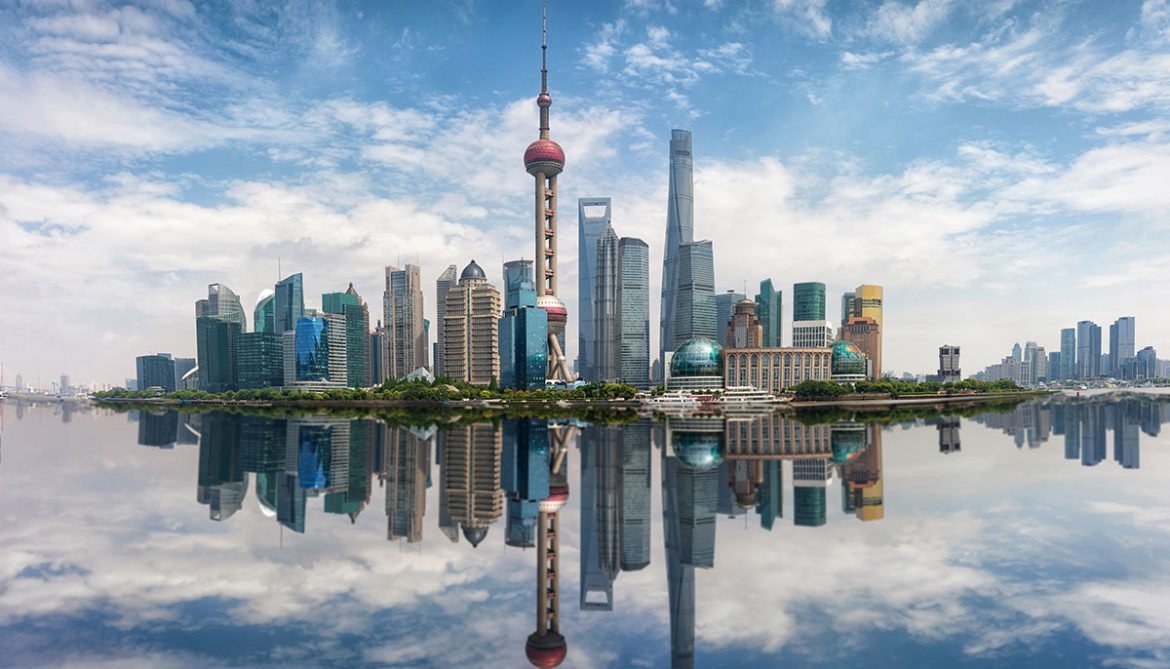There is no place on Earth like eastern China. Some of the cities there date back more than 6,000 years, so history buffs will not be disappointed. Its atmosphere is meant to put one at ease and refresh the spirit. East China is a visual feast, with scenic water villages connected by slow-moving canals and breathtaking mountain scenery. Visit here once, and you’ll see why some of China’s most popular tourist spots are located here.
10. Qingdao
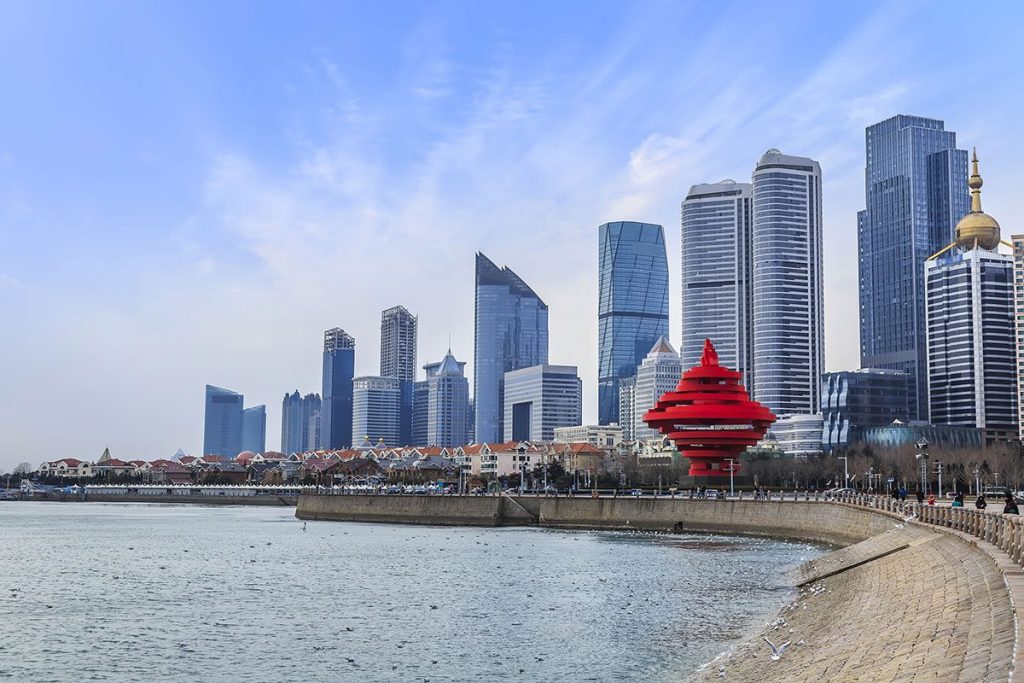
Immerse yourself in the coastal charms of Qingdao, China. Image source: 4045/Shutterstock.com
Beautiful Qingdao, in Shandong province, sits on the Yellow Sea. It has beautiful gardens and China’s longest and most popular beach for sunbathing and swimming. The oldest part of town includes cobblestone walkways and houses that seem like they came straight out of the old country since it was previously a German concession. Beer lovers will find their happy hour in Qingdao. Tsingtao, formerly known as Qingdao, is home to the biggest brewery in China. The Zhan Chao pavilion is the brewery’s symbol, so it’s worth a visit. The city is dominated by a massive red sculpture located at May Fourth Square.
9. Wuzhen

Step into the past at the famous historical and cultural town of Wuzhen in China. Image source: THINK A/Shutterstock.com
Any trip to Shanghai and its surrounding areas wouldn’t be complete without stopping by one of the city’s many picturesque water towns. It’s just around 87 miles (140 kilometers) from Shanghai. Since Wuzhen is a prototypical water town, it makes an excellent pick. The streets of Wuzhen are paved with blue flagstone, and its stone homes are various shades of black, white, and grey. The numerous bridges across the canals in this charming village only add to its scenic quality. Keep an eye out for the bridge inside a bridge, a unique architectural phenomenon where two separate bridges meet and intersect, one visible through the arches of the other. On a canal trip, you might pass several old ladies washing their laundry as you pass beneath various bridges.
8. Mount Putuo
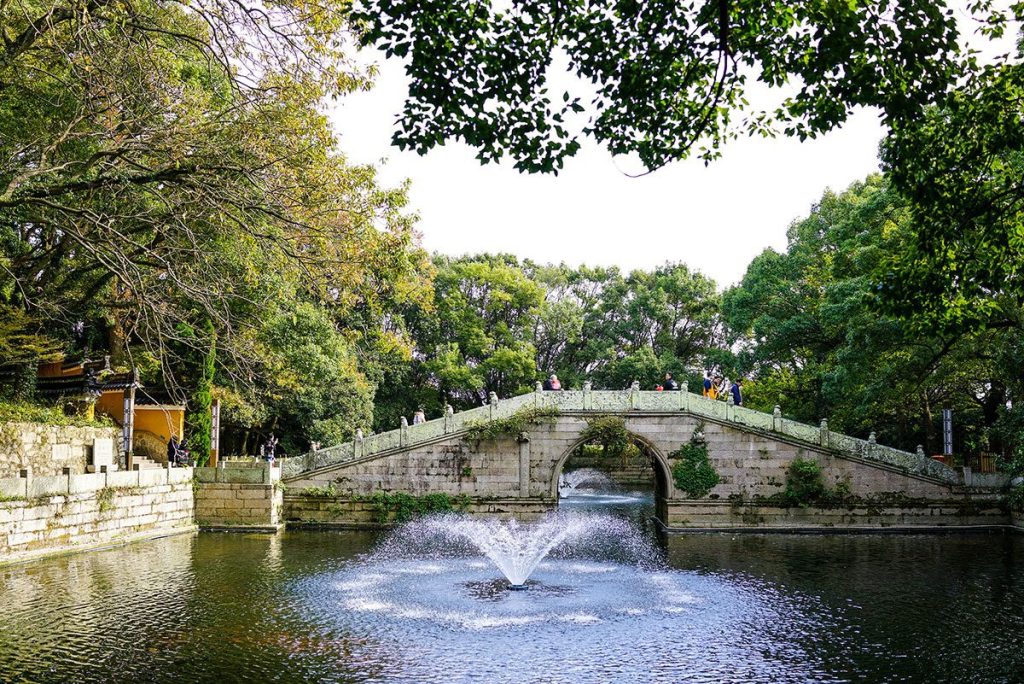
Discover tranquility at the arch bridge of Mount Putuo, Zhoushan, China. Image source: Qiongna Liao/Shutterstock.com
Located on an island in the East China Sea, Mount Putuo is revered by Chinese Buddhists. In Chinese, the mountain is called Putuoshan; it is one of the four holiest sites in all of Buddhism. There are several temples on the island, although only around 30 of them are regarded to be of significant size. Two of them are the Puji Temple (built in the 10th century) and the Fayu Temple (the second biggest on the island). The beaches at Putuo, Hundred Step and Thousand Step, are a welcome respite from all the temples. Bridges have been built between Shanghai and Ningbo and Putuo, making it possible for buses to get there.
7. Xitang
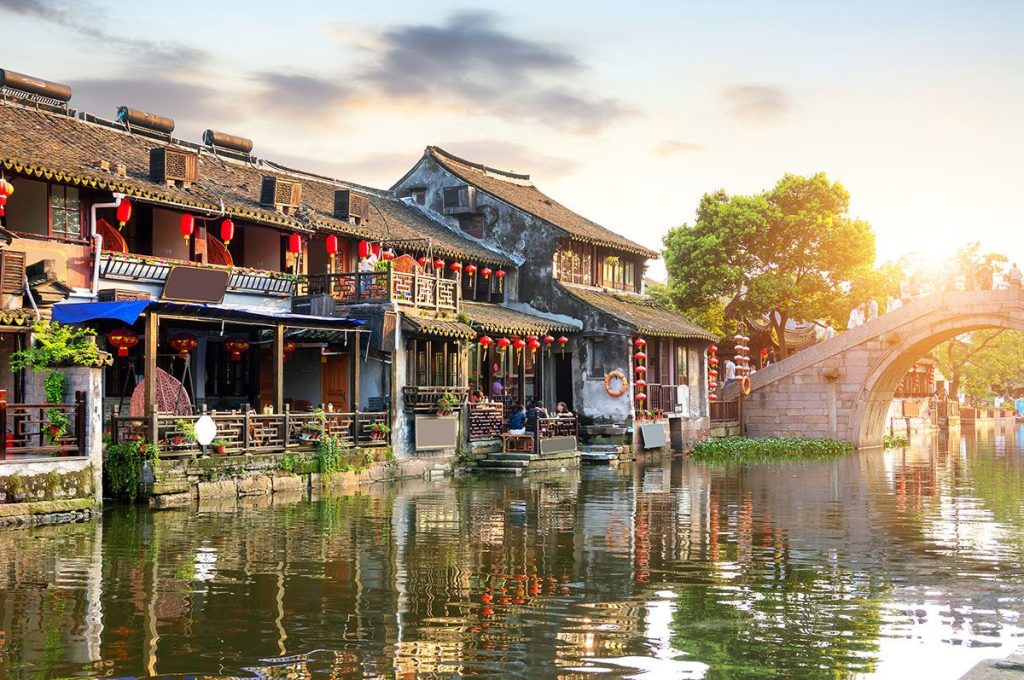
Step into the past at Xitang, a renowned historical and cultural town in Zhejiang, China. Image source: gyn9037/Shutterstock.com
Because Xitang is a water town, getting about is best done, you guessed it, by boat. The reason for this is that nine rivers converge in the city. Older parts of town are better navigated by water, not roadways. The covered passageway in this charming village dates back to the Ming and Qing periods and has been carefully conserved. More than half a mile of the riverfront is covered by this promenade, providing shelter from rain and snow. Fans of useless knowledge: In the last minutes of Mission Impossible III, Xitang makes an appearance.
6. Mount Huang

Ascend to the majestic heights of Mount Huangshan in China. Image source: pinggr/Shutterstock.com
Refer to Huangshan, the Chinese name for Mount Huang, if you want to seem like a native (Yellow Mountain). Huangshan is one of the most picturesque mountains in China; it’s extensively photographed and the subject of numerous artworks. There are 72 peaks that make up Mount Huang, rather than simply one. The Lotus, Celestial, and Bright are three of the most prominent. If you’re an early riser, you can see a beautiful dawn by taking a cable car to one of the peaks. Look up to the Sea of Clouds on a cloudy day for a different type of scenic view.
5. Zhouzhuang
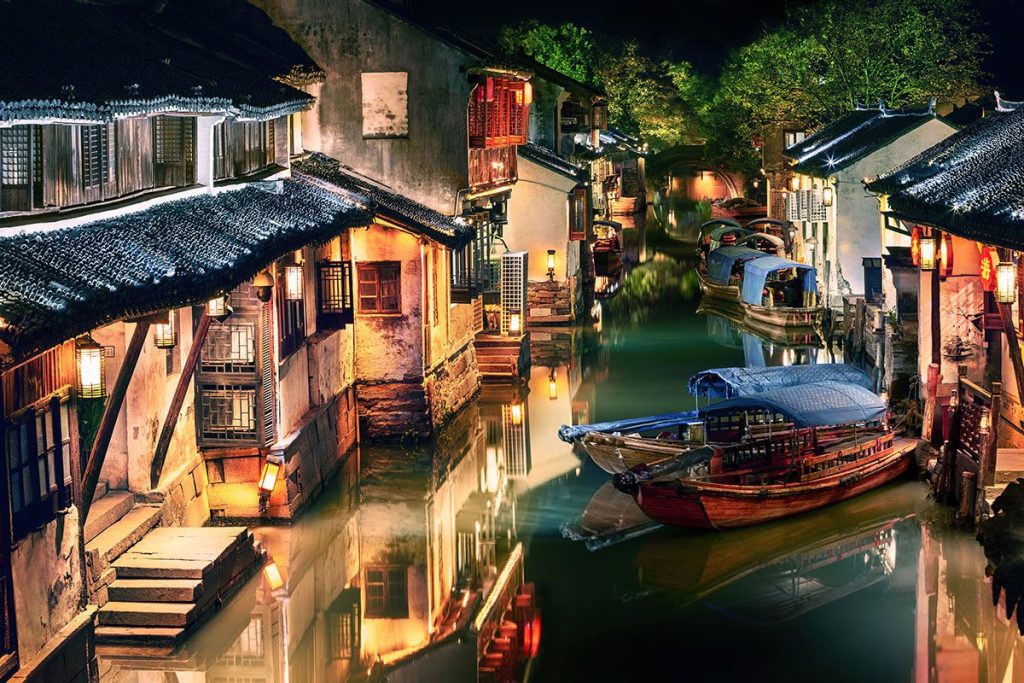
A captivating night view of the illuminated Zhouzhuang water town in Jiangsu, China. Image source: Nataliya Hora/Shutterstock.com
The lake town of Zhouzhuang, located 30 kilometers (18 miles) southeast of Suzhou, is a major draw for visitors visiting eastern China. Take a gondola ride along the canals to witness the historic homes that have been meticulously kept down through the years, many of which still have weeping willow trees dangling over the roofs. The most well-known of the town’s fourteen bridges, the Twin Bridges (Shule and Yang an) are also its most easily recognizable landmarks. Another option is to pass via the arch of the Fu’an Bridge, which connects two towers that are presently used as teahouses. One of the best Taoist temples in the area is the Chengxu Taoist Temple.
4. Yangzhou
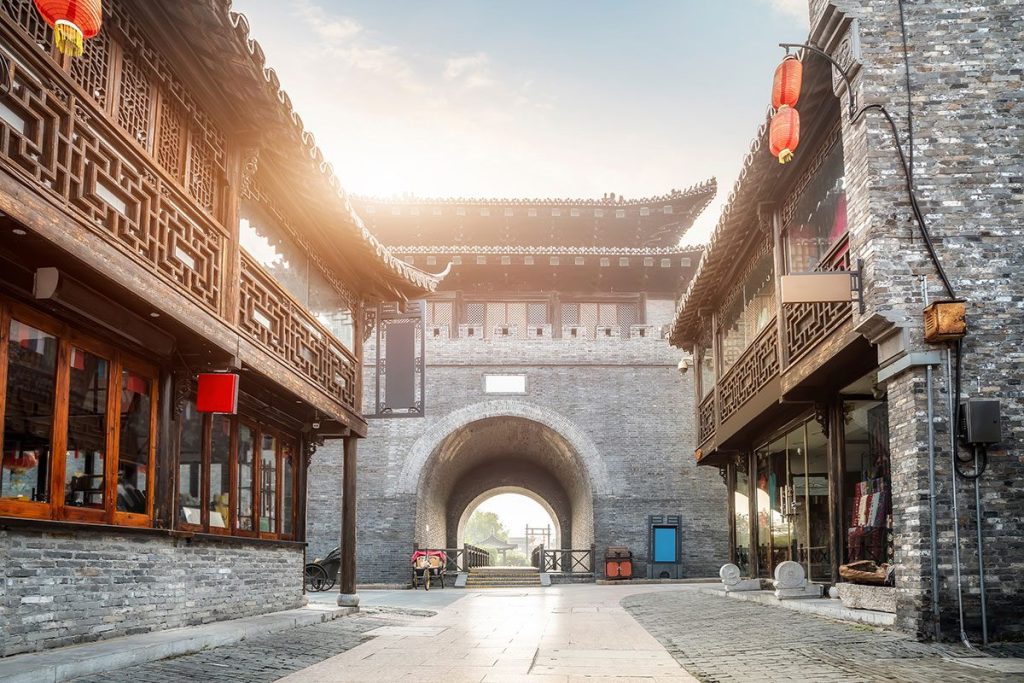
A glimpse of the ancient city, Dongguan old street, in Yangzhou, China. Image source: 4045/Shutterstock.com
The city of Yangzhou, located not far from modern-day Nanjing, has a long history of prosperity. One such beautiful water town is Yangzhou, located at the point where the Yangtze River meets the Grand Canal that runs between Beijing and Hangzhou. In addition to the Grand Canal, other points of interest include the Daming Temple, originally constructed in the 5th century but renovated during the Taiping Rebellion; and the Slender West Lake, whose architecture mimics that of the more well-known West Lake in Hangzhou. You shouldn’t miss the Hnanlinyuan Museum either, since it houses the mummy of an early emperor and a movable coffin. Visit He Yuan, the garden of Yangzhou’s eminent academics, to learn why the city’s intellectuals earned its renown alongside its merchant families.
3. Hangzhou
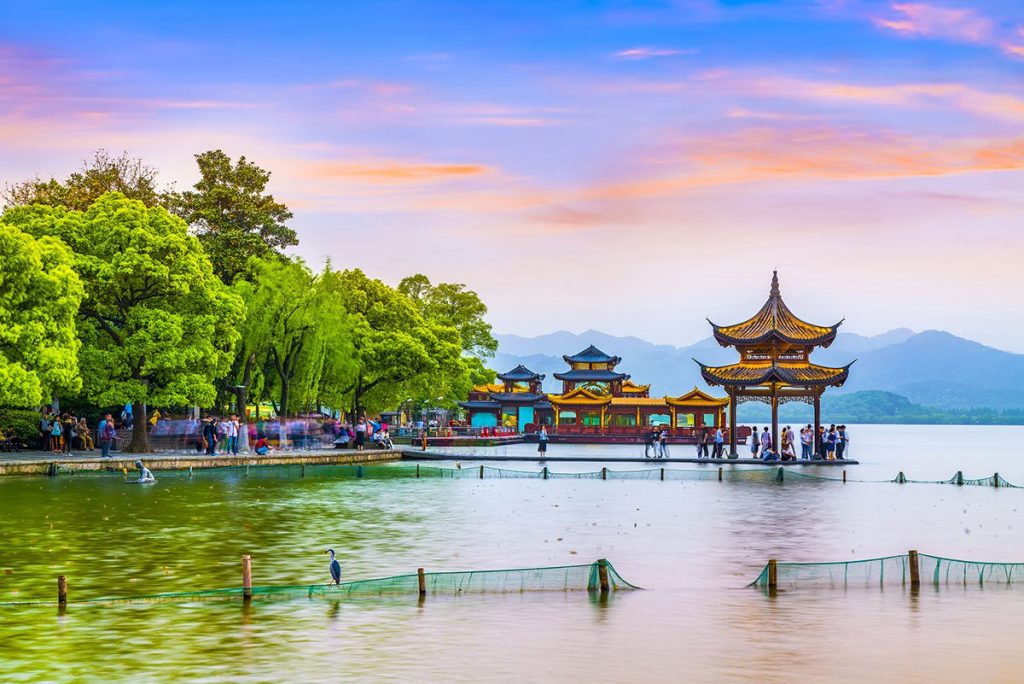
A picturesque view of the beautiful scenery at Hangzhou West Lake. Image source: 4045/Shutterstock.com
Hangzhou’s West Lake is the most well-known of China’s several West Lakes; visitors may take a boat out on the lake to see a wide variety of architectural, historical, and cultural attractions. The Eastern End of the Grand Canal is Hangzhou, China, which is 1100 kilometers (700 miles) from its Western Beginning in Beijing. Near the lake, the city’s many temples may be found, including a Confucian one. You can take a train or a plane from Shanghai to Hangzhou, but crossing the Hangzhou Bay Bridge is an interesting alternative. The bridge, which spans 35 kilometers (22 miles), drastically reduced the time needed to travel between the two cities, making overnight stays in each more practical.
2. Suzhou
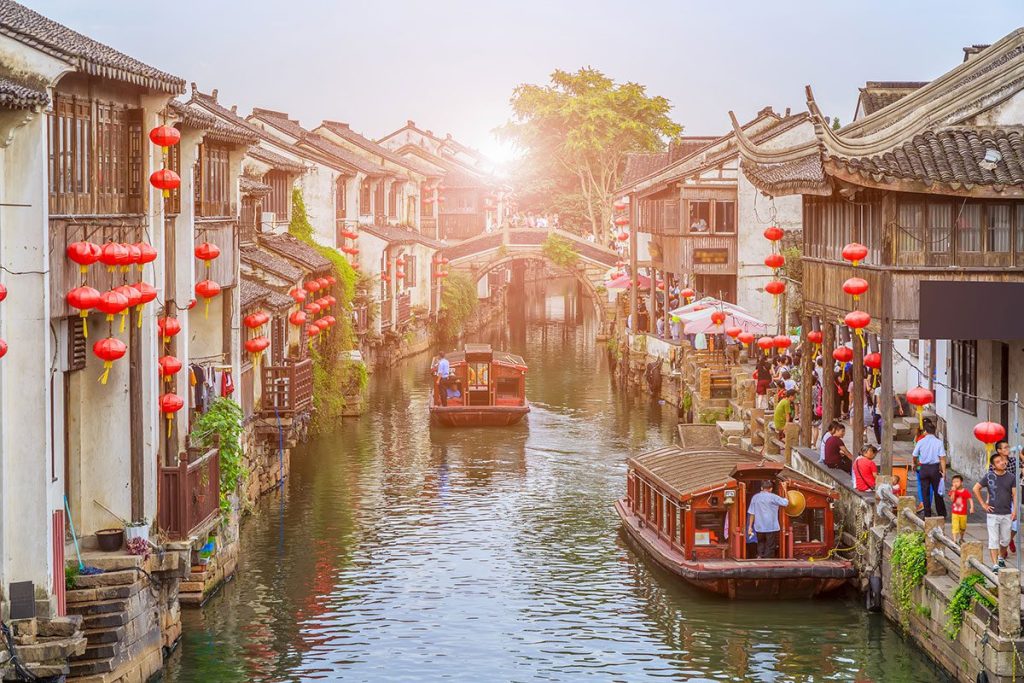
Explore the charm of the ancient town in Suzhou, China. Image source: 4045/Shutterstock.com
In China, Suzhou is the most well-known water town. It was formerly one of the world’s biggest cities. It’s hard to imagine this now, since the historic district is a tranquil oasis, with traditional Chinese residences bordering the canals and charming bridges connecting them. Suzhou is known as the silk capital of China, but it is also renowned for its gardens. Notable examples include the Humble Administrator’s Garden, which took 18 years and an emperor’s ransom in silver to construct, and the Lingering Garden, an important classical garden. Enjoy a stroll over the hand-hewn stones of the historic Ping Jiang Road.
1. Shanghai
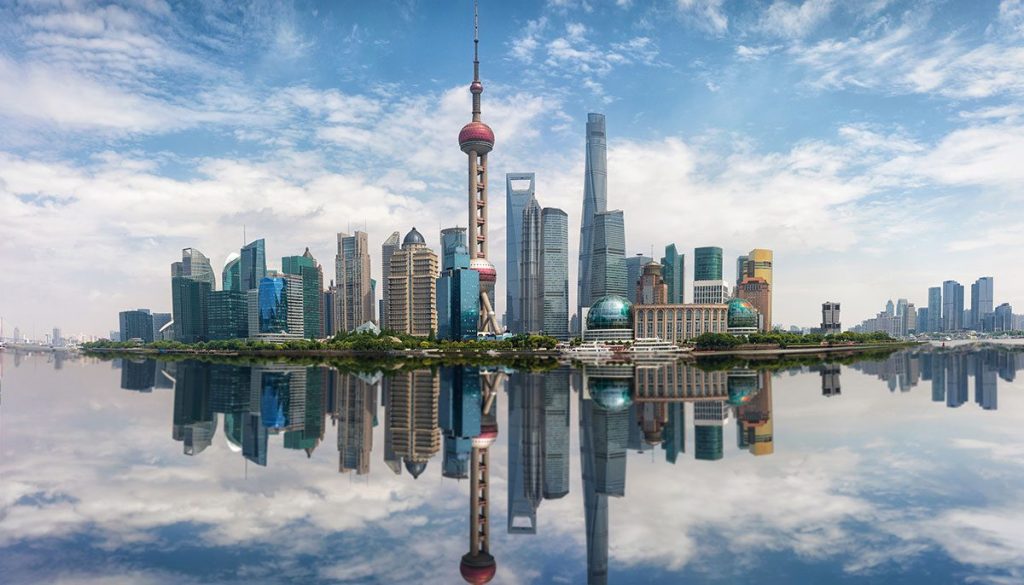
A panoramic view of the stunning skyline of Shanghai, China. Image source: Sven Hansche/Shutterstock.com
Visiting China’s biggest city, Shanghai, should include at least three must-do activities. The first thing you must do is go to the fantastic Shanghai Museum, which has thousands of objects from across China’s millennia-long history. Second, you can’t visit Shanghai without strolling around the Bund. If you have the opportunity, take a boat down the Huangpu River at night when Shanghai is lit up like a Christmas tree and see the Bund rising above the river loaded with ocean-going vessels. The Oriental Pearl Tower, a 468-meter (1,535-foot) tall Shanghai icon, is a must-see. From its observation deck, visitors can take in breathtaking panoramas of the city and beyond.


